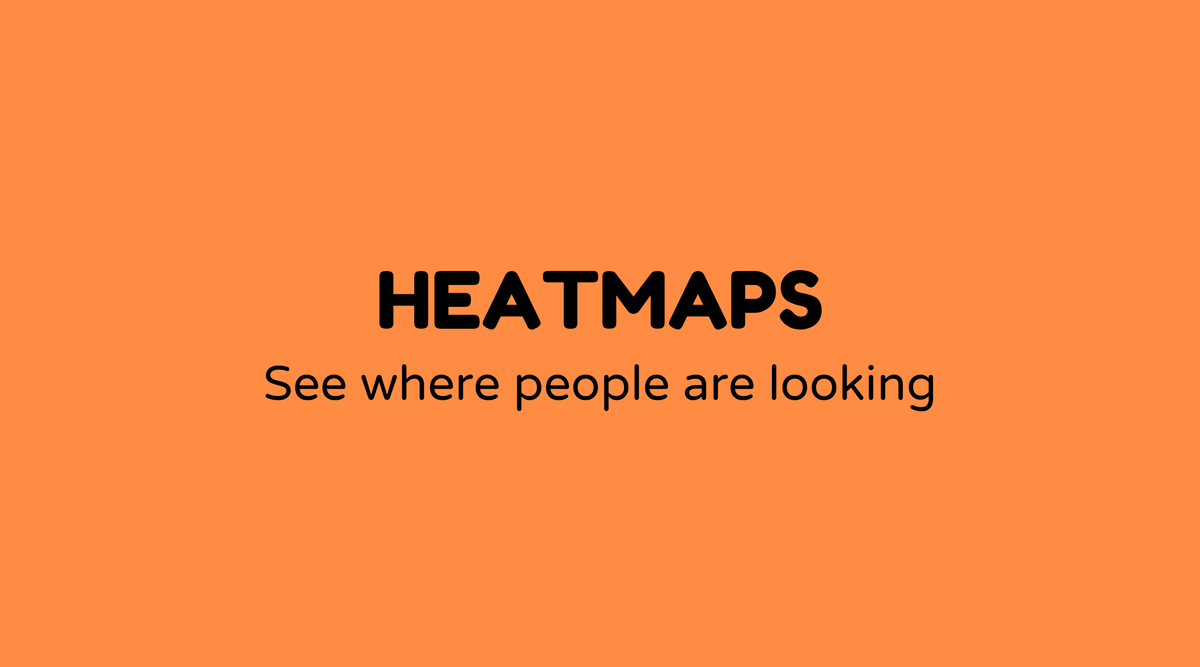Heatmaps

Overview of Heatmaps:
Heatmaps are visual representation tools that graphically display data using variations in color to signify values. They are frequently employed to illustrate website visitor behavior, giving insight into where users click, move, and scroll on a page. This effective visual tool provides understanding into user interactions and helps identify patterns that may not be immediately apparent.
Why Heatmaps Matter:
Gaining knowledge about how visitors interact with your website is essential for enhancing user experience and boosting conversion rates. Heatmaps play an important role in this process by visually conveying complex data in a straightforward manner. By utilizing heatmaps, you can identify areas of high engagement, uncover uninteresting content, and improve your site's overall performance.
What is a Heatmap:
A heatmap is a method of data visualization that uses color coding to represent various values, where warmer shades (like red and yellow) generally indicate high intensity or frequency, while cooler shades (like blue and green) signal lower values. These patterns can be applied for numerous purposes, from tracking user behavior on websites to visualizing data in business analytics.
Types of Heatmaps:
- Click Heatmaps: Indicate where users click most on a webpage.
- Scroll Heatmaps: Demonstrate how far users scroll down a webpage.
- Movement Heatmaps: Observe cursor movements to gauge user interest.
Steps to Create Heatmaps:
Creating a heatmap consists of several steps:
-
Identify Data Sources: Determine the interaction data you wish to capture—clicks, scrolls, or mouse movements.
-
Choose a Tool: Use platforms like Hotjar, Crazy Egg, or Google Analytics to create the heatmap.
-
Data Processing: Collect raw data from your website. These tools automatically log the interactions and integrate them into the heatmap.
-
Generate the Heatmap: Navigate the tool’s interface to produce a heatmap from the processed data.
-
Analyze Results: Review the heatmap to make informed decisions, such as adjusting button placements or refining content.
Examples of Heatmaps:
- E-commerce Websites: Track areas with high user interaction to position important product links effectively.
- Landing Pages: Understand which sections draw visitor attention and refine content to improve engagement.
- Content Websites: Identify the most engaging parts of an article.
FAQs
How do heatmaps aid website design?
Heatmaps provide insights into user activity, enabling designers to optimize layouts based on actual interaction data.
What's the distinction between click and scroll heatmaps?
Click heatmaps indicate where users click, while scroll heatmaps reveal the extent of scrolling on a page.
Can heatmaps track behavior on mobile devices?
Yes, most heatmap tools facilitate tracking on mobile platforms, displaying tap patterns and scrolling behavior.
Are there free tools for creating heatmaps?
Some tools, like Google Analytics, provide basic heatmap features at no cost, while premium options offer more comprehensive insights.
How frequently should I assess heatmap data?
Regular evaluations, such as monthly reviews, assist in maintaining optimal user experiences by adapting to evolving trends.
Is heatmap data anonymous?
Yes, most reputable heatmap tools anonymize user data to ensure privacy and adhere to regulations like GDPR.



